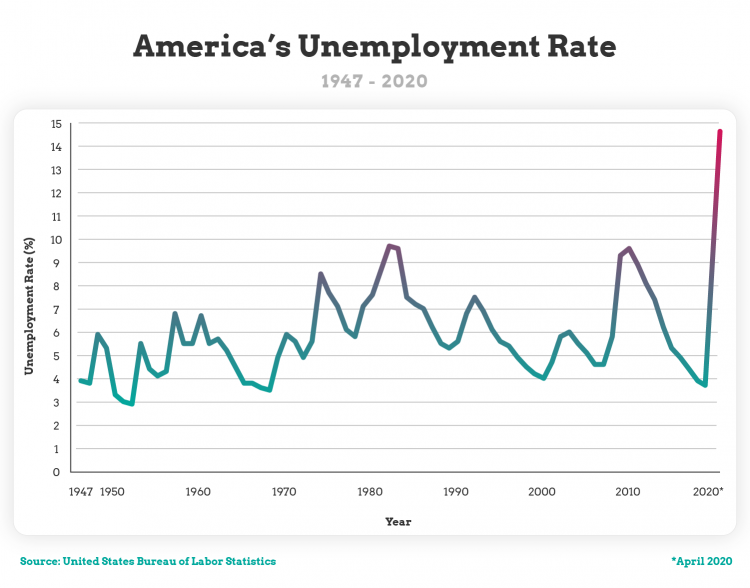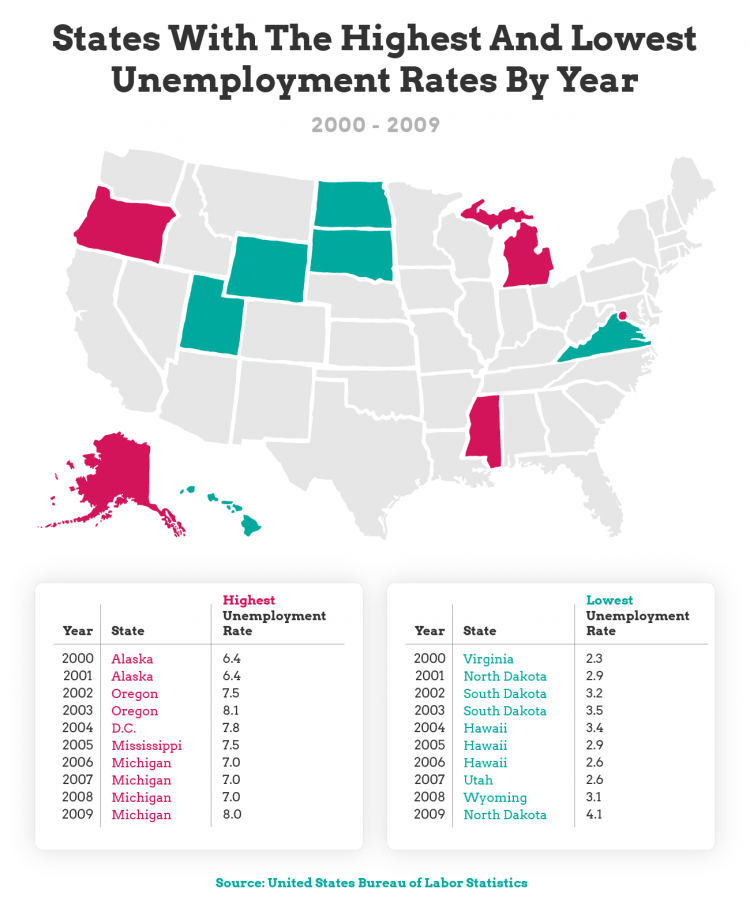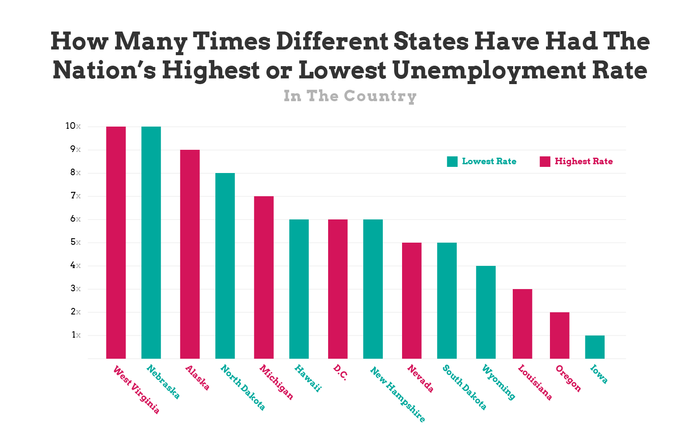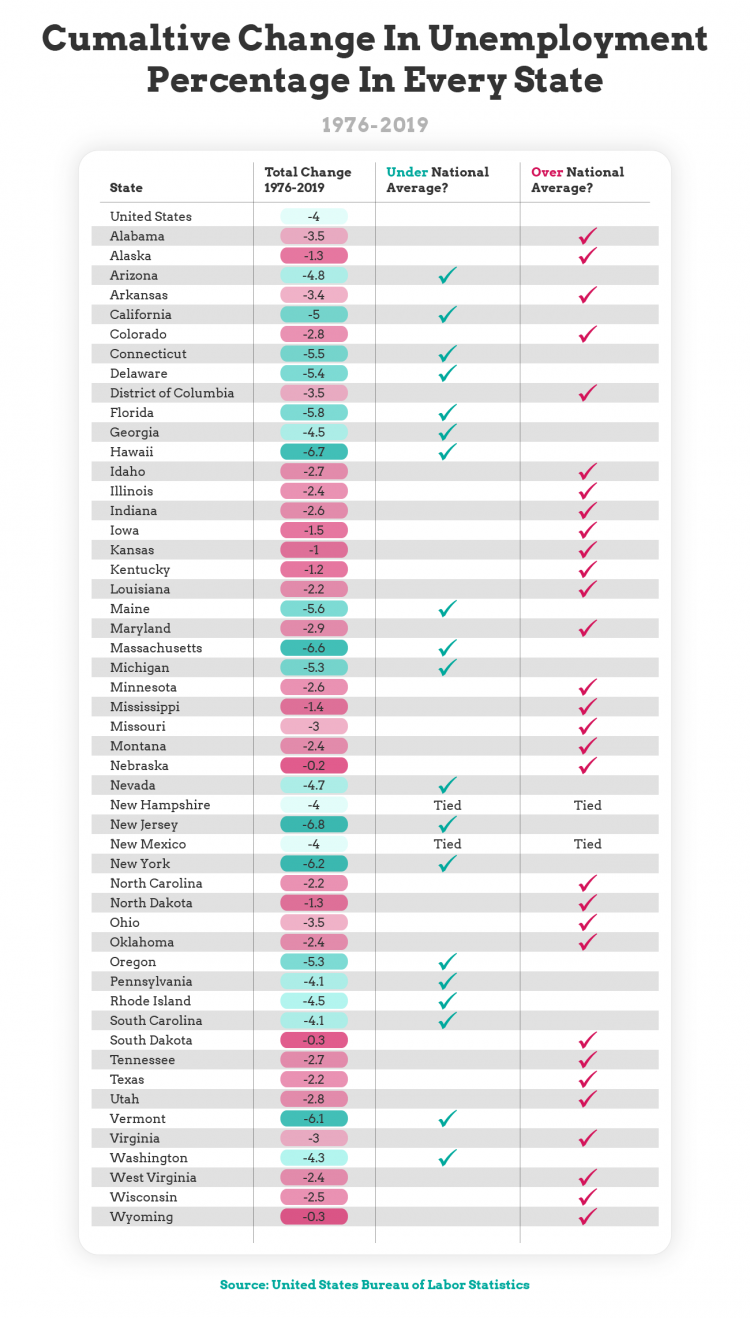We're here to help.

America’s unemployment rate is a near-constant part of the country’s political and economic discourse. But as a result of the COVID-19 pandemic, unemployment has an even bigger spotlight. Millions around the United States have lost their jobs due to the number of businesses that were forced to close or reduce staff in an effort to keep people safe and healthy.
As an institute of higher learning that prepares students for careers in many different fields, here at Grand Canyon University we have a vested interest in employment trends in America. Even before the Coronavirus hit and thrust unemployment to the top of the news, our team was undertaking a detailed study of how unemployment has changed across the nation over the decades. Once the pandemic took hold, we decided our research could help contextualize the current situation while also achieving the initial goal of illustrating how the economy and employment can vary from one state to the next.
With that in mind, we turned our data into a series of maps and graphics that illustrate some of the most interesting findings from our analysis.

The national unemployment rate is the one that typically makes the big headlines, so we wanted to make sure we took a detailed look at how that has changed over time before diving into each state individually. Using data from the Bureau of Labor Statistics going back to 1947, we were able to make the above graph showing how the unemployment rate has changed over time. Before our current crisis, the unemployment rate had not increased above 10 percent in the last 70+ years, with major job recessions in the 1980s and 2010s getting the closest to double digits.
Unemployment had been on a steady decline for the past few years and was even approaching historic lows. Then COVID-19 came into our lives. Due to the pandemic and quarantine orders put in place to save lives around the country, many businesses were forced to make budget and staffing cuts, or close entirely. As a result, the American unemployment rate jumped to the highest point ever in the time the BLS has tracked it, peaking at 14.7 percent in April 2020.

To give additional information and context to some of America’s more recent past as it relates to unemployment, we also created this timeline focusing on the period from 1976 to the present. At various points, we have made annotations outlining world events and the impact they had on the economy and unemployment.
We were able to find detailed data on the unemployment rate in every state for the same period of time as the second graphic above, 1976-2019, from the Bureau of Labor Statistics. We turned that data into the interactive map above. Users can hover over any one state to see their unemployment rate in a given year, and they can change years using the arrows or slider in the upper, right-hand corner. States are color-coded every year so that those with a lower unemployment rate relative to the rest of the states are in green, and those with higher rates are in red. We also produced a map of similar data focusing solely on April 2020’s coronavirus-related unemployment rates.




Part of our deep dive on this information included finding which state had the highest and lowest unemployment rate in the country in every year evaluated. To simplify that data and its presentation, we made a map for every decade since the 1980s and highlighted every state that had the highest unemployment at least once in that time in red, and every state with the lowest rate at least once in green. We also listed the highest and lowest for each year in the tables below the maps and included the specific rates for each.
Reviewing the data this way reveals a couple of common themes. Namely, Plains states, such as Nebraska and the Dakotas, consistently have some of the lowest unemployment rates in the country, as does Hawaii. On the flip side, less populous states such as West Virginia and Alaska show up time and again with some of America’s highest unemployment rates, as do Washington, D.C. and Michigan.

We took the above data and graphed out how many times different states had either the highest or lowest unemployment rates in the country. Nebraska led the way with the lowest rate ten times, matched at that number on the unemployment side of things by West Virginia.

We also tracked how many times each state’s unemployment rate was above, below or tied with the national average and charted out the results above. In the 44-year time period evaluated, four states had unemployment rates below the national average every single year – Nebraska, Virginia and both Dakotas. On the flip side, Mississippi is the state where unemployment rates were consistently higher than average, as they were above the rest of the country’s average 41 out of 44 years.

Finally, we tracked the cumulative change in unemployment for the entire country from 1976-2019 and found the same data for every state. We then found every state with a cumulative change above or below that of the nation as a whole and marked each in the chart above. We found that the national average rate was a four percent decrease in unemployment at that time, with New Jersey having the biggest positive change, dropping their rate by 6.8 percent. The consistently low unemployment rate of Nebraska actually hurts them in this kind of evaluation, as their unemployment rate only fell by 0.2 percent over 40+ years, the lowest rate of change of the entire country.
The unemployment rate is something that will have a place in American news for the rest of our lives and beyond, with our current global situation making it all the more noteworthy. Regardless of whether you are a student looking to learn the skills necessary to begin your chosen employment journey, or someone looking to shift careers be sure to check out the different degree opportunities offered by Grand Canyon University.
06/23/2025
6 min read
06/23/2025
5 min read
06/23/2025
5 min read